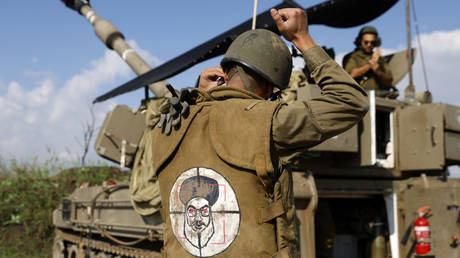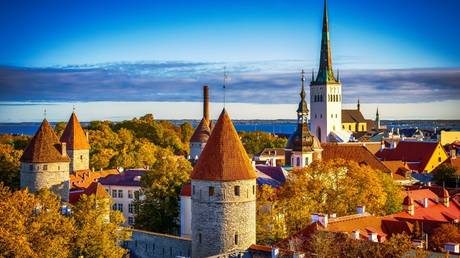
The Lebanese Shiite group has a long and bloody history with the Jewish state, and now, both sides’ restraint is at an end
Since the escalation of the Palestinian-Israeli conflict and the start of the IDF ground operation in Gaza, it has been repeatedly reported that one of the potential participants in an open confrontation with Israel could be the Lebanese Shiite paramilitary group and political party, Hezbollah. In January, there were even more statements by officials about the likelihood of a military clash on Israel’s northern border.
Thus, Israeli Prime Minister Benjamin Netanyahu said on January 8 that his country is ready to go to war with the Lebanese group. However, he still believes that it is better to resolve the conflict peacefully. Netanyahu made his statement following a visit to the town of Kiryat Shmona, after it was hit by a Hezbollah anti-tank missile. The locality in northern Israel is regularly shelled by the organization.
Later, on January 17, Israel Defense Forces (IDF) Commander-in-Chief Herzi Halevy said that the likelihood of a full-scale military operation in Lebanon has now drastically increased. “I don’t know when a war will happen in the north. What I can say is that the likelihood of this happening in the coming months is now much higher than in the past,” The Times of Israel quoted him as saying. Halevy made the statement while speaking to soldiers in northern Israel at maneuvers simulating an IDF offensive in Lebanon. He noted that troops are “building up readiness for battles in Lebanon.”
Indeed, Israel’s military buildup on its northern border is confirmed. According to ABC News, tens of thousands of regular troops and about 60,000 reservists are stationed there. The other day, Israeli Defense Minister Yoav Galant noted that Israeli troops may very soon engage in hostilities along the country’s border with Lebanon. However, he did not specify when exactly this would happen.
But before we can understand why the likelihood of a military conflict between the IDF and Hezbollah is growing, we should briefly dive into the history of the Lebanese Shiite group’s origins and its relationship with Israel.
Hezbollah’s genesis
Hezbollah, or in Arabic, “The Party of Allah,” is a Shiite military and political organization operating in Lebanon. It was founded in 1982 in response to the Israeli invasion of southern Lebanon, which was one episode in the 15-year Lebanese Civil War that ended in 1990 after the signing of the Taif Accords.
Hezbollah was originally established as a paramilitary organization to protect Lebanon’s Shiite population from Israeli aggression. Over time, however, it has evolved into an influential political movement that plays an important role in Lebanese political life. Several factors contributed to Hezbollah’s emergence.
First of all, it was the growing anti-Israeli sentiment in Lebanon. In the 1970s, the struggle between various religious and political groups intensified. One of the main issues was the Palestinian-Israeli problem. Lebanon became a haven for hundreds of thousands of Palestinian refugees who clashed with the local population. In 1982, Israel invaded southern Lebanon to dismantle Palestinian refugee camps and suppress anti-Israeli activity. This event caused widespread discontent among Lebanese Shia, who made up a large part of the population of South Lebanon.
Lebanon has a political balance in which power is divided among the three main religious groups: Maronite Christians, Sunni Muslims, and Shiite Muslims. The Shia, who made up about 40% of Lebanon’s population, felt underrepresented in the political and economic life of the country.
In 1982, a group of Shiite activists who were dissatisfied with the Israeli occupation of South Lebanon united under the leadership of Imam Mohammed Hussein Fadlallah, Hassan Nasrallah, the current secretary general of Hezbollah, and Ibrahim Amin, Lebanon’s former defense minister.
Today, Hezbollah is one of the most influential political forces in Lebanon, with representation in the Lebanese parliament and control over a number of important ministries. Hezbollah is also one of the most powerful paramilitary groups in the country. It has significant armed forces that include the regular army, special forces, and popular defense forces.
Hezbollah’s main source of strength is its combat units, which are composed of well-trained and motivated fighters. They have extensive skills in guerrilla warfare tactics and urban warfare, making them a dangerous opponent for the group’s adversaries. In addition, Hezbollah possesses a significant arsenal of weapons that includes medium and long-range missiles as well as unmanned aerial vehicles. It has the ability to attack targets in Israel and other countries in the region from Lebanese territory.
The organization is an influential player in the regional arena, maintaining close ties with Iran and Syria. It has taken an important role in the Syrian conflict by supporting the government of Bashar al-Assad. As one of the most powerful and influential Shiite organizations in the world, it plays an important role in the political and military life of Lebanon and the region. Hezbollah is, however, the subject of fierce controversy. Its supporters consider it a heroic organization that fights to protect Lebanon and the Palestinians, while its opponents accuse it of terrorism and destabilizing the region.
Hezbollah has waged an armed struggle against Israel and repeatedly attacked Israeli territory, including firing rockets, hitting military targets and killing Israeli civilians. The group also supports the Palestinian resistance in the Gaza Strip.
Difficult relationship: Born to feud
Relations between Israel and Hezbollah have remained tense for decades and have often resulted in armed conflict. This relationship, as noted above, developed after Hezbollah’s founding in the early 1980s and broadly spans the political, military, and economic spheres.
The roots of the confrontation can be traced back to the first Arab-Israeli war in 1948 and later to the Israeli occupation of South Lebanon in 1982. Hezbollah emerged as a reaction to Israeli influence in Lebanon and the persecution of that country’s Shiite population. It quickly became a major political and military force, presenting itself as both the opposition and resistance to Israel.
The most significant conflict between Israel and Hezbollah was the 2006 war, also known as the Second Lebanon War, which began on July 12, 2006 and lasted until a UN Security Council resolution was passed on August 14 the same year.
The main cause of the war was the kidnapping of two Israeli soldiers by Hezbollah and subsequent Israeli military operations in Lebanon to free the hostages and weaken Hezbollah. Hezbollah in turn responded with rocket attacks on Israelis and offensives into northern Israel.
The 2006 war was devastating and had serious consequences for both sides of the conflict as well as for Lebanese citizens. Significant damage was inflicted on Lebanon’s infrastructure, civilian facilities, and industry; including airports, roads, bridges and power grids. Some 1,200 Lebanese, most of whom were civilians, were killed as a result of the war.
For its part, Hezbollah fired more than 4,000 rockets at Israel, causing casualties and damage to Israeli cities and settlements. Some 160 Israeli soldiers and about 40 Israeli citizens were also killed. Israel suffered significant losses in tanks, armored vehicles and military equipment.
As a result, a ceasefire was agreed under the auspices of UN Security Council Resolution 1701, which called for a cessation of military operations, the withdrawal of the Israeli army from southern Lebanon and the establishment of stability in the region. As part of the resolution, UN peacekeeping troops (UNMC) were deployed to monitor the truce and implement the agreement’s provisions.
Overall, relations between Israel and Hezbollah remain complex and confrontational. Both sides continue to wage online warfare, using cyberattacks and information operations against each other. But there are also occasional exchanges of rocket fire. Despite the regular clashes and tensions, it is also possible to find a path to a diplomatic settlement which would allow both sides to achieve peace and stability.
Will there be an open war between Israel and Hezbollah?
Many analysts of the processes taking place in the Middle East expect tensions to rise on Israel’s northern border. This opinion is conditioned by the increasing frequency of clashes between Hezbollah and the Israel Defense Forces, which has already led to the death of more than 160 representatives of the Lebanese group since the start of the Palestinian-Israeli war on October 8, 2023.
Since the first days of the current escalation, Israeli tensions with Hezbollah have increased. And thoughts of launching military action to the north were in the minds of the Jewish state’s political and military establishment as early as late October. For example, The Wall Street Journal, citing sources, reported that on October 11 US President Joe Biden persuaded Israeli Prime Minister Benjamin Netanyahu not to launch a preemptive strike against Hezbollah because of the risk of a major war in the region.
On that day, Israeli intelligence received information about Hezbollah’s intention to invade Israel from several directions, and Israeli fighter jets were already in the air, waiting for orders to attack the group’s facilities in Lebanon. It took about six hours of negotiations and meetings for Israeli officials to back down, WSJ sources said.
The situation on the border between Israel and Hezbollah remains tense, and the possibility of a full-scale conflict is real. This was confirmed by Israeli media, citing remarks by National Security Council head Tzachi Hanegbi at a closed session of the Knesset Foreign Affairs and Defense Committee on January 17. Hanegbi also provided interesting details regarding Hamas.
According to the official, Hamas’ leader in Gaza, Yahya Sinwar, has taken a harder line during negotiations for the exchange of hostages, which will likely draw out the process of returning the 117 people still held captive since the October attacks on Israel. In his remarks, Hanegbi emphasized that the physical elimination of Sinwar is still a pressing goal for Israeli security forces.
However, neither Hanegbi nor other Israeli figures have offered concrete solutions for a long-term arrangement in Gaza. This is worrisome, as the WSJ notes, citing its White House sources. The newspaper claims that efforts to convince Netanyahu to agree to an end-of-conflict option that includes handing over control of Gaza to the Palestinian National Authority have failed. Instead, Israel intends to carry out a prolonged operation against Hamas.
However, recently negotiators from Israel, the US, Egypt and Qatar met in Paris and agreed on the basics of a new deal aimed at releasing the hostages. This was reported by NBC News on January 29. The plan envisions the gradual release of captives, starting with women and children. For its part, Israel will offer limited pauses in hostilities and the admission of humanitarian aid, as well as the release of Palestinian prisoners. The plan has been sent to representatives of Hamas.
If a temporary reduction in the intensity of the fighting in Gaza is achieved, the controversy within Israel surrounding the current Netanyahu government will escalate. Obviously, the end of the conflict would also lead to the end of the prime minister’s political career and those of other prominent figures. Even Washington, Israel’s most important ally, has delivered repeated messaging that Netanyahu must go.
No one wants a major war in the region. Hezbollah, which is closely allied with Iran, also does not want tensions to escalate into open warfare. This is demonstrated by its restraint, both in statements by top officials and in attacks on Israeli forces. But if Netanyahu does decide to launch an operation in southern Lebanon, the war will be long and bloody. Representatives of the “Axis of Resistance” led by Iran will lend support with even greater effort. Then the specter of war will become a reality and the Middle East will burst into flames, the consequences of which no one can assess or foresee.




